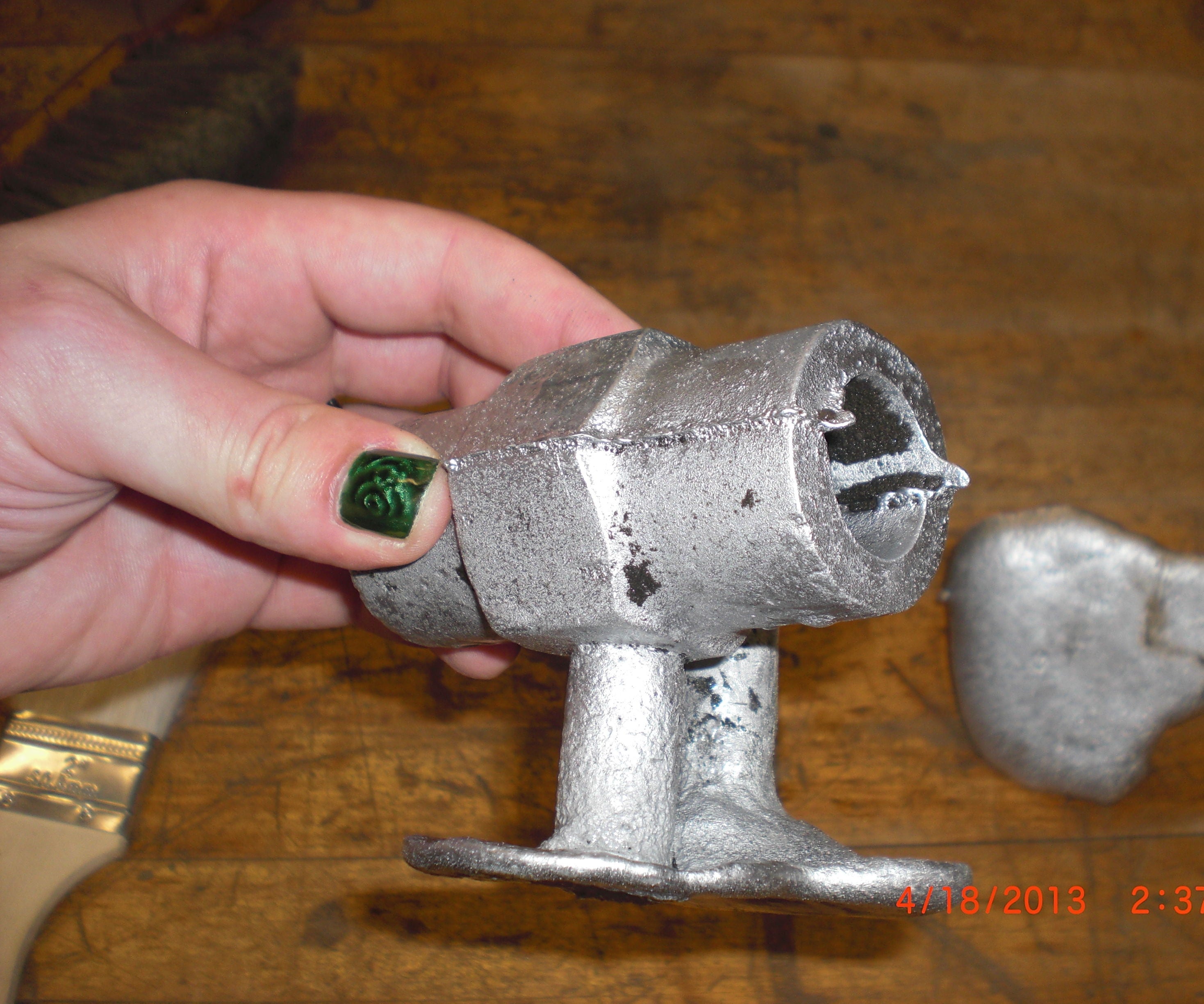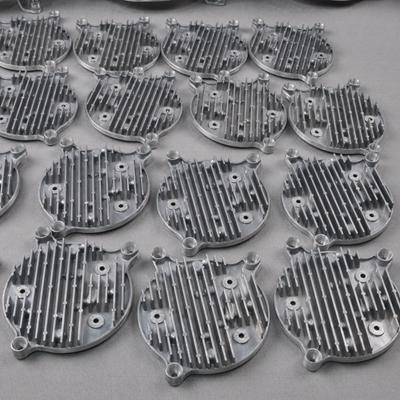A Comprehensive Guide to Aluminum Casting: Strategies, Utilizes, and Industry Insights
Aluminum casting is a critical procedure with varied applications across numerous industries. This overview takes a look at various casting techniques, including sand, pass away, and financial investment casting. Each method has distinct benefits, adding to aluminum's track record for corrosion-resistant and light-weight parts. Understanding these methods is necessary for suppliers looking to leverage aluminum's residential properties. Nonetheless, the landscape is rapidly developing. The effect of existing fads on future practices warrants even more expedition.
Recognizing Aluminum: Properties and Advantages
Aluminum, a versatile steel, is extensively acknowledged for its distinct properties that make it a suitable choice for numerous applications. It is light-weight yet strong, using an outstanding strength-to-weight proportion that is especially beneficial in sectors such as aerospace and automobile. Furthermore, aluminum displays phenomenal rust resistance as a result of the development of a safety oxide layer, which boosts its sturdiness and longevity.
The steel is likewise highly malleable, enabling simple shaping and manufacture, which adds to its prevalent usage in production. Aluminum is an outstanding conductor of electricity and heat, making it important in thermal and electric applications. Its recyclability adds to its appeal, advertising sustainability in making processes. The combination of these buildings not just enhances efficiency however additionally lowers power consumption throughout its lifecycle, positioning aluminum as a crucial material in modern engineering and style.
Overview of Aluminum Casting Techniques

Sand Casting Approaches
Amongst different aluminum casting strategies, sand casting stands apart as one of the most commonly used techniques due to its flexibility and cost-effectiveness. This strategy involves producing a mold and mildew from sand, which can be easily shaped to form intricate geometries. The process starts with packaging sand around a pattern, usually made from metal or plastic, to create a cavity that specifies the last shape. When the mold and mildew is prepared, liquified aluminum is put right into the tooth cavity, permitting it to cool and solidify. Later, the sand is gotten rid of, disclosing the cast part. Sand casting is particularly favored for creating huge components and little production runs, making it a necessary technique in different sectors, including vehicle and aerospace. Its versatility to different designs improves its charm.
Die Casting Processes
Die casting procedures represent a highly effective method for generating intricate aluminum components with superb dimensional accuracy and surface area finish. This method entails requiring molten aluminum right into a mold and mildew under high stress, guaranteeing that also the most complex geometries can be accomplished. There are two primary types of die casting: hot chamber and chilly chamber. Warm chamber die casting is appropriate for metals with reduced melting points, while cold chamber die casting is favored for aluminum as a result of its higher melting point. Both approaches facilitate quick manufacturing and can suit high volumes, making them optimal for sectors such as automotive and electronic devices. Effective die casting requires exact temperature level control and cautious mold style to stop flaws and ensure top quality.
Sand Casting: A Standard Method
Modern-day casting strategies have actually emerged, sand casting stays a foundational technique in the aluminum industry due to its flexibility and cost-effectiveness. This typical technique involves developing a mold and mildew from a blend of sand and a binding representative, permitting the production of complex shapes and dimensions. Sand casting is specifically beneficial for reduced to tool manufacturing quantities, as it lessens configuration expenses and time.
The procedure begins with the development of a pattern, which is after that positioned in the sand to create a dental caries. As soon as the mold is ready, molten aluminum is gathered, loading the dental caries and taking the shape of the pattern. After cooling down, the sand is eliminated, exposing the completed cast part.
Sand casting is commonly utilized for generating automobile components, machinery parts, and artistic sculptures, highlighting its long-lasting significance in different industries of the aluminum market. (Aluminum Casting Company)
Die Casting: Accuracy and Efficiency
Die casting is a procedure that uses amazing precision and performance in aluminum production. This technique is extensively used throughout different industries due to its capacity to generate complicated shapes with tight tolerances. Nonetheless, it likewise provides unique challenges that call for cutting-edge options to ensure suitable outcomes.
Process Summary and Conveniences
When thinking about aluminum casting methods, die casting stands apart for its accuracy and effectiveness. This procedure involves requiring molten aluminum into a mold and mildew under high pressure, which permits limited tolerances and elaborate layouts. The quick air conditioning of the steel guarantees quick solidification, leading to top notch get rid of minimal surface area flaws. Furthermore, die casting deals exceptional repeatability, making it ideal for big production runs. Using recyclable molds significantly decreases product waste and production time, contributing to cost-effectiveness. Moreover, the toughness and durability of die-cast aluminum parts make them positive for requiring applications. In general, pass away casting combines advanced useful site modern technology with sensible benefits, positioning it as a leading selection in aluminum casting strategies.
Applications in Different Industries
The flexibility of die casting allows its application throughout a vast array of markets, showcasing its precision and efficiency. In the automobile field, die casting produces complex components such as engine blocks and transmission real estates, adding to weight reduction and improved performance. The electronic devices industry advantages from die casting by producing long lasting and light-weight housings for numerous tools, boosting both capability and visual appeals. In the aerospace have a peek at this website field, this method offers high-strength components that hold up against severe conditions while preserving reduced weight. Furthermore, consumer goods manufacturers make use of pass away casting for producing components that call for complicated geometries and limited tolerances. Overall, pass away casting plays an essential function beforehand modern technology and item style throughout several sectors, highlighting its importance in contemporary manufacturing.
Difficulties and Solutions
Many obstacles develop in the die casting process that can affect both accuracy and performance. One substantial problem is the incident of problems such as porosity, which can endanger the honesty of the end product. In addition, preserving accurate temperature control is important, as variations can result in inconsistent material homes. Device deterioration also existing obstacles, usually resulting in increased production prices and downtime. To reduce these issues, makers use innovative simulation software application to predict potential troubles before manufacturing begins. Executing routine upkeep schedules for machinery and tools additionally helps preserve efficiency. Investing in high-quality products and using knowledgeable specialists can boost overall procedure dependability, making sure that high requirements of precision are constantly satisfied.
Investment Casting: Detail and Complexity
Although financial investment casting is usually associated with high precision and elaborate styles, its real toughness hinges on the capability to generate complex geometries that would certainly be challenging to accomplish with various other making procedures. This technique utilizes a wax pattern, which is covered with a refractory material to create a mold. As soon as the mold is created, the wax is thawed away, leaving a cavity that flawlessly replicates the initial pattern.

Applications of Aluminum Castings Throughout Industries
Financial investment casting's capacity for creating elaborate aluminum parts has made it a valuable method across various sectors. In the auto market, aluminum spreadings check are made use of for engine blocks, transmission housings, and suspension elements, adding to weight decrease and enhanced gas effectiveness. The aerospace sector gain from aluminum spreadings in airplane frameworks, turbine housings, and landing equipment, where strength-to-weight proportion is crucial. Aluminum Casting Company. Furthermore, the electronic devices field uses aluminum castings for warm sinks and enclosures, making sure reliable thermal management and longevity. In the building market, aluminum spreadings are used for architectural aspects, home window structures, and structural parts, providing corrosion resistance and aesthetic appeal. The aquatic market integrates aluminum spreadings in watercraft engines and fittings due to their light-weight and resistance to salt water deterioration. On the whole, aluminum spreadings demonstrate adaptability and functionality, making them important in varied applications across various areas
Present Trends and Future Instructions in Aluminum Casting
Current developments in aluminum casting innovation are forming the future of manufacturing throughout different fields. One remarkable trend is the enhancing adoption of additive production methods, which permit for more complex geometries and decreased material waste. Additionally, the integration of automation and robotics enhances production processes, enhancing performance and accuracy.
Sustainability is likewise a driving force, with producers concentrating on recycling aluminum and minimizing energy usage throughout the casting procedure. This change not just decreases environmental impact yet also reduces operational costs.
Improvements in simulation software program allow much better style and optimization of casting procedures, resulting in greater quality items with fewer issues. As markets remain to welcome these innovations, the demand for lightweight and high-performance aluminum elements is expected to rise, even more solidifying aluminum casting's duty in the future of manufacturing. Overall, these trends highlight a commitment to efficiency, sustainability, and technological innovation in the aluminum casting sector.
Often Asked Concerns
What Are the Environmental Effects of Aluminum Casting Processes?

Just How Does Aluminum Casting Contrast to Other Materials?
Aluminum casting deals lightweight, corrosion-resistant homes, making it helpful compared to heavier steels like steel. Its thermal conductivity and convenience of creating even more boost its allure, while particular plastics offer flexibility lacking in standard aluminum applications.
What Safety Steps Should Be Taken During Aluminum Casting?
During aluminum casting, essential precaution include wearing safety equipment, making certain appropriate ventilation, making use of fire-resistant products, keeping tools routinely, and adhering to safety and security protocols to stop mishaps and exposure to hazardous fumes and molten metal.
Exactly How Can I Pick the Right Aluminum Alloy for Casting?
Choosing the ideal aluminum alloy for casting includes assessing mechanical residential or commercial properties, corrosion resistance, and designated application. Consider variables like temperature resistance and weldability to guarantee the chosen alloy meets certain performance and durability demands.
What Are the Common Issues in Aluminum Castings and Their Solutions?
Typical defects in aluminum castings consist of porosity, surface area, and contraction imperfections. Solutions include enhancing mold style, managing cooling prices, and guaranteeing correct alloy option, along with carrying out complete evaluation techniques to determine and rectify these issues effectively.
Amongst the most commonly used approaches are sand casting and pass away casting, each offering distinctive benefits and applications. Among different aluminum casting methods, sand casting stands out as one of the most extensively used methods due to its flexibility and cost-effectiveness. Warm chamber die casting is appropriate for metals with low melting factors, while chilly chamber pass away casting is liked for aluminum due to its higher melting point. Modern casting techniques have arised, sand casting stays a foundational method in the aluminum market due to its versatility and cost-effectiveness. When taking into consideration aluminum casting methods, pass away casting stands out for its precision and efficiency.